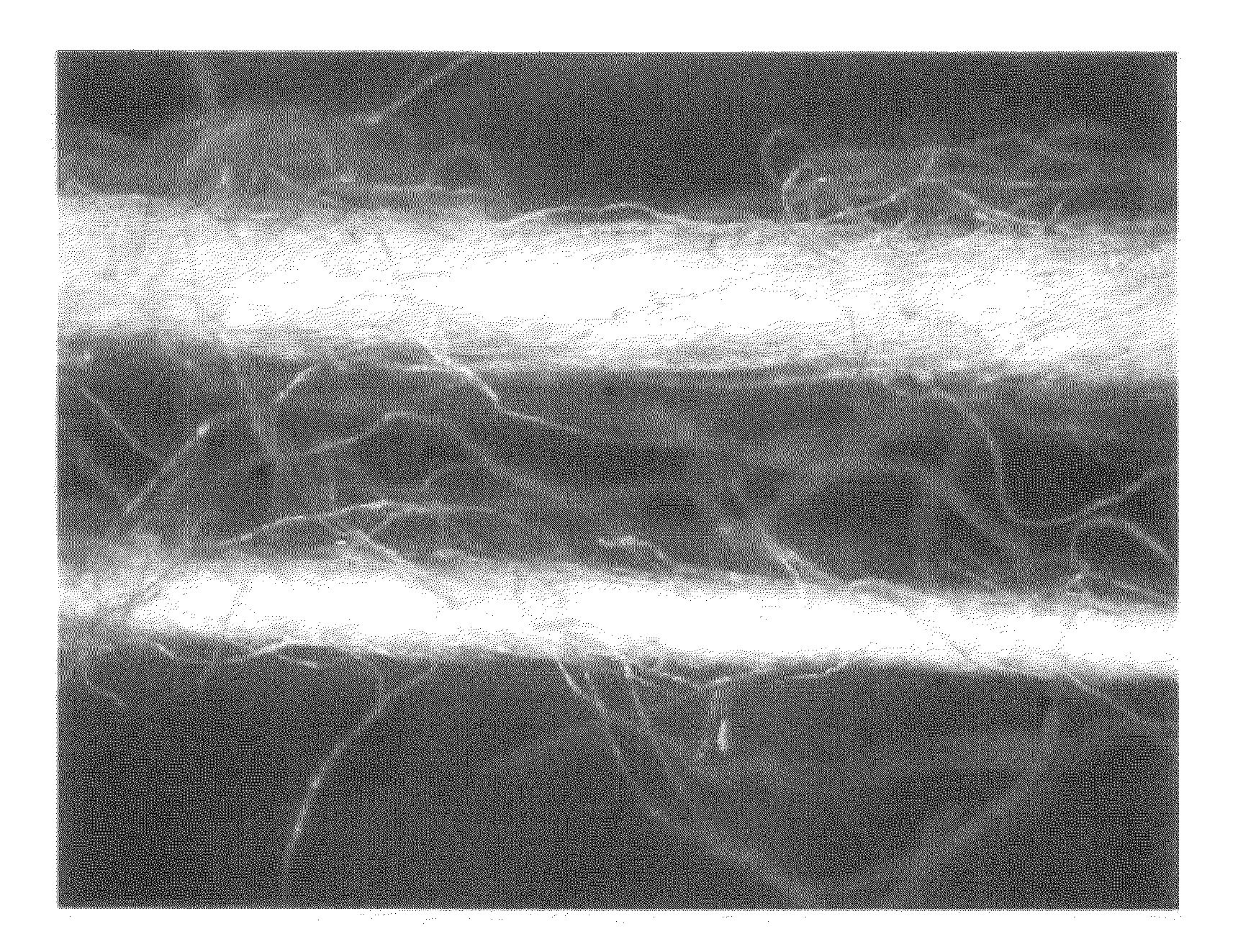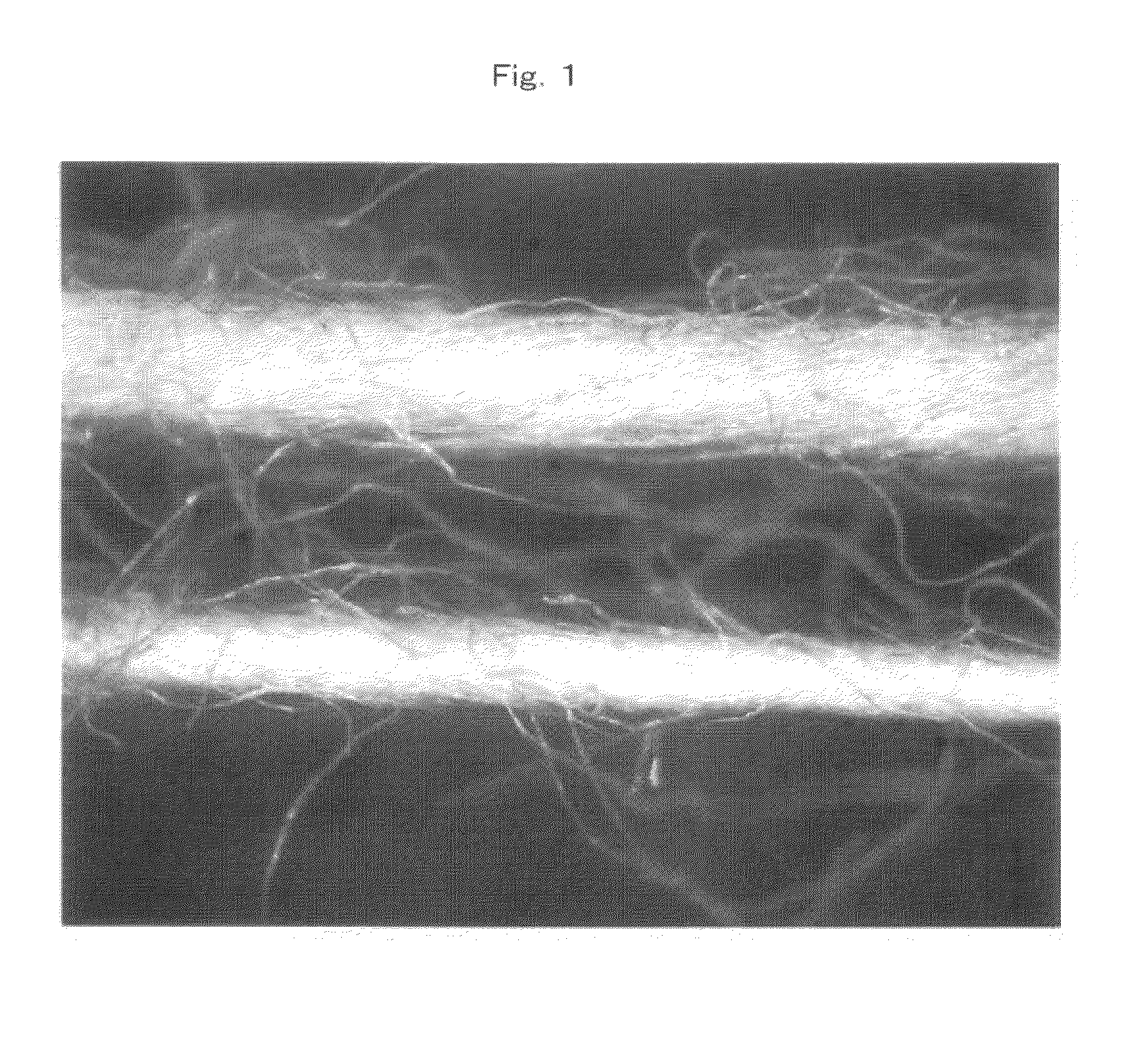Bulked yarn and wound yarn for production of woven or knit fabric, woven or knit fabric, and method for producing the same
- Summary
- Abstract
- Description
- Claims
- Application Information
AI Technical Summary
Benefits of technology
Problems solved by technology
Method used
Image
Examples
examples
[0115]Hereinafter, the following examples are intended to describe this invention in further detail and should by no means be interpreted as defining the scope of the invention.
[0116][1] Production of Processed Spun Yarn
[0117]In the following Examples and Comparative Examples, a ratio of an average diameter of a processed spun yarn (bulked spun yarn or less-bulked processed spun yarn) obtained by removing a water-soluble yarn by dissolution in water from a composite twisted yarn relative to an average diameter of a spun yarn used for producing the composite twisted yarn, and the B value, were obtained by the following method, and the texture was evaluated by the following method.
[0118]Further, as evaluation of weaving or knitting properties, a torque index of a raw yarn for producing a woven or knit fabric was measured by the following method.
[0119](1) Ratio of Average Diameter of Processed Spun Yarn Relative to Average Diameter of Spun Yarn
[0120](i) A spun yarn (original single spu...
examples 6 to 8
[0182]An interlock knitted fabric was knitted with a 14G×30-inch circular knitting machine by using singly the processed spun yarn (E2), (E3), or (E4) obtained in Examples 2 to 4, and the obtained interlock knitted fabric was scoured in a bath by a continuous scouring machine at 95° C. and dried by a hot air dryer at 150° C. Results of evaluation or measurement of the texture, degree of bulkiness, pilling, water absorbency, and drying performance of the obtained interlock knitted fabric are shown in Table 5.
examples 9 and 10
[0183]The processed spun yarn (E2) obtained in Example 2 and a 20-count single spun yarn (“TS20 single yarn” manufactured by Tsuzuki Spinning Co., Ltd.) made of 100% cotton fiber and having the number of twists of 600 twists / m (Z twist) were knitted at a ratio of 1 / 1 (the processed spun yarn (E2) / the 20-count single spun yarn) [proportion of the processed spun yarn (E2): 48 mass %] in Example 9 and at a ratio of 1 / 3 (the processed spun yarn (E2) / the 20-count single spun yarn) [proportion of the processed spun yarn (E2): 24 mass %] in Example 10 with a 14G×30-inch circular knitting machine to obtain interlock knitted fabrics, and the obtained interlock knitted fabrics were scoured in a bath by a continuous scouring machine at 95° C. and dried by a hot air dryer at 150° C. Results of evaluation or measurement of the texture, degree of bulkiness, pilling, water absorbency, and drying performance of the obtained interlock knitted fabrics are shown in Table 5.
PUM
| Property | Measurement | Unit |
|---|---|---|
| Length | aaaaa | aaaaa |
| Length | aaaaa | aaaaa |
| Length | aaaaa | aaaaa |
Abstract
Description
Claims
Application Information
 Login to View More
Login to View More - R&D
- Intellectual Property
- Life Sciences
- Materials
- Tech Scout
- Unparalleled Data Quality
- Higher Quality Content
- 60% Fewer Hallucinations
Browse by: Latest US Patents, China's latest patents, Technical Efficacy Thesaurus, Application Domain, Technology Topic, Popular Technical Reports.
© 2025 PatSnap. All rights reserved.Legal|Privacy policy|Modern Slavery Act Transparency Statement|Sitemap|About US| Contact US: help@patsnap.com


